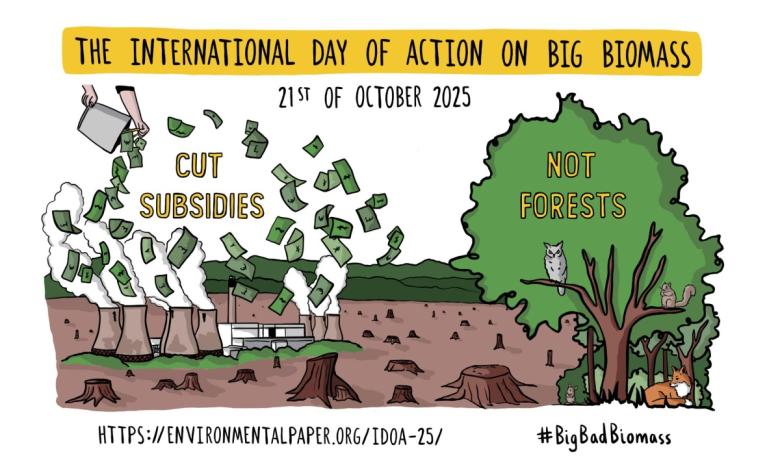Sophie Bastable & Peg Putt, Biomass Action Network
October 21st is the International Day of Action on Big Biomass, a collaborative effort between international organisations to expose the environmental and social impacts of biomass energy all around the world. Organised annually by the Environmental Paper Network’s Biomass Action Network (BAN), this year, the central theme and rallying call is to “Cut Subsidies, Not Forests.”
Governments worldwide are funnelling billions of dollars into subsidising burning trees for energy, with enormous adverse impacts on natural forests and the communities they support. Alarmingly, subsidies have unleashed a logging frenzy, intensifying and extending the degradation of some of the world’s most important forests . This contradicts and undermines the efforts of protecting and restoring forests to support climate mitigation
Perversely, burning biomass is claimed to be a positive climate measure. Biomass energy is labelled as carbon neutral based on future potential regrowth of forests, but first it increases atmospheric carbon dioxide for decades. Per unit of energy, it emmitsat least as much as coal. Therefore, burning trees for energy provides no climate benefit.
Add to this the fact that harmful biomass subsidies divert money away from real renewables - such as wind and solar - and energy efficiency, which would genuinely cut emissions and are far cheaper than expensive biomass energy production.
Target 18 of the Global Biodiversity Framework commits Parties to identify, and eliminate or phase out subsidies that harm nature - urgently. This goal will never be achieved while the biomass industry is still receiving subsidies. This is why today, NGOs around the world are demanding that governments redirect biomass subsidies to better uses.

